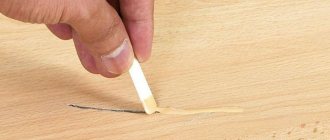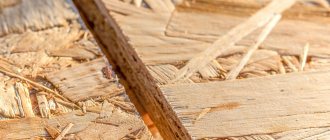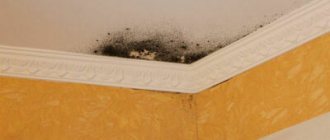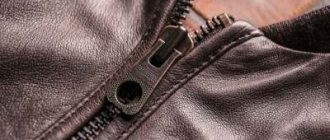Laminate surface repair
Quite often, kitchen furniture is made from chipboard - chipboards, which, for greater strength, are covered with a special film - laminated. But, nevertheless, this material is not resistant to moisture, high temperatures and intense mechanical stress.
You can repair a chip or other damage at home. To do this you will have to stock up on the following materials and tools:
- shavings (sawdust will also work);
- hairdryer;
- saw;
- PVA glue.
The process of restoring a laminated chipboard countertop consists of the following steps:
- You should turn on the hairdryer and warm up the damaged area;
- after drying, the peeled coating should be removed;
- the area is covered with a layer of glue and left alone for a quarter of an hour;
- prepare a mixture of sawdust or glue and infuse for 10-15 minutes;
- the composition is poured into the recess and compacted with a spatula;
- excess glue is removed and the table is left to dry for 24 hours.
To protect the countertop from moisture, especially in previously damaged areas, it is recommended to seal the most vulnerable areas with a sealant. This method is also suitable for removing chips on an MDF tabletop.
Restoration of artificial stone countertops
Despite the strength of this material, flaws may appear on it and you can get rid of them at home. To remove a scratch from a kitchen countertop, a mixture of polyester resins is required, which makes even significant defects invisible.
The restoration proceeds as follows:
- around the damaged area it is necessary to clean the surface and degrease it;
- particles of material are removed from the recess, it is expanded and made deeper;
- the damage is covered with polyester resin and left to dry for 20 hours;
- Afterwards, the tabletop is sanded, first with an abrasive material and then with felt.
This kind of work is quite painstaking and requires certain skills in working with the tool. Therefore, if you have no experience, you can contact a specialist.
First aid
If there are various scratches and stains on interior items, do not despair, but immediately begin solving the problem.
You can do the work yourself. You can remove scratches from furniture at home using special products purchased in the store. Even if everything is in order with the furniture, it won’t hurt to buy similar “magic wands”. One of them will be a furniture touch. It is simply irreplaceable for removing scratches from both wooden and laminated surfaces. This item is affordable for everyone. Another advantage of the stroke is that it has a huge number of colors. Thanks to this, you can mask surface defects of any table, chair, cabinet or other furniture.
Just do not forget that its use is carried out exactly according to the instructions. Otherwise, improper use may result in a spoiled mood and the inability to restore the appearance of the property.
For defects on chipboard surfaces (which are not so rare), wax will work well. But here, as in the previous version, it is necessary to choose the right color. Before using the product, you should make sure that the surface is completely clean of dirt and dust. Only after this can you rub wax into the damaged area.
After this procedure, you need to level the surface using an edging knife. Then you need to wait for it to dry completely. After this, it is worth wiping the surface with a fluffy cloth specially designed for polishing. When lacquered furniture becomes scratched, wax can also come to the rescue. It will not only remove defects, but also give the interior item a radiant shine.
Repairing damage to a plastic table
Quite a popular material used for the manufacture of kitchen furniture, which does not swell or get wet. However, mechanical stress on plastic furniture often leads to the formation of cracks or chips, especially in the kitchen.
To repair such a countertop, you will need a special adhesive composition intended for plastic products. This will allow the loose covering to be reattached.
If minor flaws appear on the table - cuts, scratches, then you can do without expensive glue; you can also use regular instant glue for these purposes.
If a large piece breaks off, then it is best to use Titan glue. The plastic is ground to a powder state, mixed with an adhesive, and the damaged surface is sealed with this mixture.
Repair of minor damage
Typically, this type of work such as restoration of an artificial countertop involves an initial inspection by a master, followed by procedures for restoring the countertop.
Repair of countertops made of artificial stone is carried out both on site, if the damage is minor, and with transportation to a production facility, if significant intervention is required.
When shallow scratches or stains appear on the surface that cannot be removed, a grinding machine with a fine abrasive wheel will help. Problems such as stains from various chemical detergents and hot burns on the surface, as well as minor scratches, can be removed with your own hands.
Hot pan burn stain removed by sanding
To do this, you will need a polyester compound designed specifically for this purpose. Scratches can be sanded, first with medium, and then with the finest sandpaper. Afterwards it should be polished. Very carefully, slowly and carefully with a soft felt cloth until the original appearance is restored.
Master restorers in this case resort to using a sanding machine with a felt attachment. But when doing DIY repairs, it’s better to use a felt cloth. You need to be careful if the tabletop is made of acrylic with a slight coating of artificial stone. In this case, surface grinding is not performed.
To restore original strength and beauty, work must be performed by qualified specialists. Otherwise, independent intervention in the repair of a surface made of quartz agglomerate may further lead to an increase in the cost of restoration work or to the purchase of a new countertop. Restoring and repairing an artificial countertop is a rather labor-intensive process.
Restoring integrity to a glass tabletop
If chips or other defects appear on glass furniture, then restoration on your own is impossible. To remove even the smallest scratches you will need professional equipment. If there is significant damage, the table cannot be “reanimated” and there is only one way out - replace the product with a new one.
To protect the glass from scratches, it is recommended to use fabric coasters or cover it with a tablecloth.
Damage to the countertops can be associated both with poor-quality material from which they are made, and with improper use. However, regardless of the reason, in most cases, there are ways to fix it.
Important point
When deciding how to remove scratches from furniture of dark color, light or colored surfaces, you need to take one nuance into account. It is impossible to say with certainty that this or that shade is suitable for masking scuffs and defects.
Even if you have a good memory and great confidence in your actions, you cannot immediately apply a camouflage agent to the product. It is best to apply the chosen product in an area that no one will see. If the shades combine well, you can proceed to application to the front surface.
The main causes of scratches
Before you start eliminating scratches, you should find out the reasons for their occurrence. This is necessary in order to prevent the formation of defects in the future. The main reasons include:
- Exposure to abrasive substances, including sand and dust. For this reason, minor and barely noticeable defects appear on lacquered furniture.
- Damage caused by pets' claws or various sharp objects.
- External mechanical influence. The largest and most problematic chips appear from impacts from furniture.
How to remove scratches
Detected defects can be removed using improvised or specialized means. If there is serious damage, it is possible to combine several methods.
Special marker
A marker has been created for processing a polished surface, which allows you to restore the attractive appearance of the product. The principle of operation of the marker is the penetration of microparticles into cracks and subsequent filling of the scratch. The marker is colorless and has a consistency similar to paints and varnishes. The applied substance on the surface is not washed off with water and creates protection against new scratches.
How to remove grease stains from glossy furniture
You won't be able to avoid stains from greasy hands or food marks on the surface of furniture. But several secrets will help reduce the time of labor-intensive cleaning:
- Prepare paper towels. You can wipe the surface of glossy furniture on which a stain has just appeared with paper towels or napkins. It is enough to blot the greasy stain and not a trace will remain of it.
- We use warm water. There is no need to rush to use more aggressive chemical cleaning products. In a situation where a stain has just appeared on the gloss, a sponge or cloth moistened with warm water can eliminate the problem.
- We use soda. Difficult, old stains from a glossy surface can be removed with baking soda. The powder is mixed with water to form a paste and gently applied to the stain.
After ten minutes, the soda slurry is carefully removed with a paper napkin.
Taking into account all the recommendations for glossy surfaces, the cleaning process will go faster, and the furniture will retain its shiny appearance longer.
Folk remedies
Various products have become popular among people that also effectively eliminate damage to furniture. Most of the methods described do not require any special costs and are easy to use.
Walnut kernel
When rubbing scratches with a walnut kernel, the damaged area is gradually filled with mass and becomes almost invisible. The procedure can be performed several times in a row to achieve a better effect. It is possible to replace the kernel with nut oil and wipe the scratches by applying the substance to a napkin.
Mayonnaise
The effectiveness of mayonnaise is ensured by its strong penetration into the wood structure. Mayonnaise should be applied to the damaged area several times with an interval of 2 hours. After treatment, the wood will swell and the crack will fill on its own. This method can eliminate defects on any wooden furniture.
Vinegar with vegetable oil
It is recommended to treat light furniture with a mixture of olive oil and vinegar, using the components in a ratio of 5:2. The damaged area is wiped with the mixture and left for a day for complete absorption. Then the furniture is polished with a rag.
Sandpaper
Fine-grained sandpaper helps remove defects on steel furniture elements. The damage is smoothed over with sandpaper and, if necessary, treated with putty. After the material has dried, paint is applied to match the color of the product to mask the area.
Mastic
You can paint over small scratches on wooden products with mastic. The material is distributed on the surface and rubbed with a napkin. To make your own mastic, you need to melt 40 g of wax, add 30 g of turpentine and a teaspoon of alcohol, and then mix thoroughly.
Colored crayons
Colored crayons contain wax, which allows you to paint over scratches. To achieve the desired effect, you just need to choose the right color crayons.
Paraffin
Candle paraffin is kneaded, applied to the damaged area and rubbed until the defect is eliminated. When processing glossy furniture, you need to wipe the surface with a soft cloth after completing the restoration. It is enough to remove the remaining paraffin from the matte surface.
Eyebrow pencil
Applying an eyebrow pencil to scratches can visually hide them.
The disadvantage of using this method is that the pencil wears out quickly, which is why you have to constantly touch up defects on the furniture.
By mixing ground coffee beans with a small amount of liquid, you get a semi-thick substance to remove scratches. Apply the substance to the scratches using a cotton swab or disk. You can eliminate defects with coffee only on dark furniture.
Lemon juice and oil
A mixture of lemon juice with vegetable or olive oil in equal proportions is also suitable for treating damaged furniture. The mixed components are applied to a clean, lint-free cloth and the surface is polished, making movements in the direction of the scratch.
How to hide deep cracks
Very noticeable damage to furniture cannot be easily hidden with improvised means. To restore the original appearance and restoration requires a comprehensive approach to solving the problem.
Preparing the site
Before starting work, you need to thoroughly clean the surface of the furniture from dust and dirt. The cleaned area is coated with a degreasing agent and allowed to dry. Also at the preparation stage, you need to decide what material will be used to hide defects.
Applying the material
The purchased material is applied with a suitable tool or cotton pad to the damaged area. When applying, try to ensure uniformity. Excess material is carefully removed with a spatula.
Grouting the surface
After treating the scratched areas, you need to wipe the surface. During this procedure, the furniture coating becomes smoother and more even. As a rule, fine-grained sandpaper is used for grouting.
Painting
A layer of paint is applied on top of the applied masking material, which matches the color of the rest of the furniture. Paint not only visually hides defects, but also provides additional protection against new damage.
Useful tips
Oddly enough, amateur attempts to repair chips or restore more serious damage to furniture sometimes cause more damage than simply tinting or painting a furniture touch.
For example, you should not use water-based dyes to fill scratches, cracks and swelling of furniture veneer. Do not use iodine, strongly brewed tea, an aqueous solution of potassium permanganate, watercolors, gouache, or car varnishes. As an exception, you can temporarily mask scratches on furniture with walnut.
All of the above can hide the damaged area for a while, but, as a rule, it causes swelling of the decorative coating due to swelling of the wooden base of the furniture.
The largest chips and even breaks, which often happen on armrests or the ends of doors, cabinets, especially kitchen furniture, can be treated by applying a repair varnish layer to the entire front surface. In this way, it is possible to preserve the mirror of the lacquered surface, and this is the most important thing in the restoration of wooden furniture. If you repair chips and the entire panel of furniture with “solid” varnish, then the damaged area may not be visible even with the most careful examination.
Features of working with glass surfaces
In order not to damage the fragile glass surface, you need to take into account a number of nuances during processing. The main rule is to be careful. It is also important to select suitable products that do not harm glass products to complete the work.
Paste GOI
Deep scratches on glass can be removed using GOI paste. If possible, glass should be removed from furniture for ease of processing. A small amount of paste is applied to the fabric and spread over the surface. Then rub the product in a circular motion into the damaged areas. Remains of GOI paste after treatment are removed with a damp cloth.
Nail polish
Minor scratches on the glass coating can be easily masked with nail polish. A prerequisite is the transparency of the varnish. The substance must be applied with a brush to the scratched areas and wait until the varnish fills the crack and dries. The remaining varnish is carefully wiped off the surface with a soft cloth.
Basic methods of plastic restoration
Scratches on plastic can be superficial or deep. This is easy to check with your fingertips and nails. Small scratches and pronounced grooves are repaired in different ways.
Surface scratches
Minor damage can be removed from soft plastic by polishing. The scratched area is cleaned of dirt and grease with a cloth moistened with warm soapy water.
Next, the dried, clean surface is polished with one of the following products:
- a small amount of toothpaste
- a mixture of soda and water,
- furniture varnish,
- special polish.
Finally, the remaining product is washed off with wet and dry clean rags.
Shine on glossy plastic can be achieved with furniture varnish or car wax. The treated area is rubbed with a woolen cloth until it shines.
Deep scratches
Defects of this kind are first sanded with sandpaper. The work uses sheets of different grain sizes, depending on the depth of the scratch.
The emery is moistened with water and sanded extremely carefully so as not to damage entire areas. The leveled surface is polished with a special paste until smooth.
Deep lines on colored plastic are tinted. You can use coloring pencils from automotive household chemicals. Before restoration, the surface is cleaned and degreased. After drying, it is coated with colorless varnish. The work is completed with polishing wax.
How can you restore furniture made from laminated chipboard?
Furniture made from laminated chipboard is found in every home and office. This is the most budget-friendly and quite decent-looking furnishing option. In more expensive versions of furniture, only the body is made from chipboard, while the facade part is made from MDF with various types of cladding (PVC film, veneer, enamel) and solid wood. MDF and solid surfaces may also require restoration, but we will not talk about them. This article contains information on how to restore chipboard with a laminated surface with your own hands .
Do-it-yourself chipboard restoration can be of several types:
- Restoring the color of a worn (worn) surface.
- Masking chips and scratches on the surface.
- Restoration of chipped ends of chipboard furniture.
- Restoration of places with torn fasteners and hinges.
Each of the defects requires its own approach to restoration and a different set of available tools.
Other popular methods
There are some scratches that can be easily removed with steam. The only drawback of this method is the possible damage to some types of surface.
Therefore, it is not suitable for everyone. Deciding
, this option should be considered as one of the possible ones.
Before you start processing, you need to prepare gauze and a modern iron with steam in advance. The gauze needs to be folded in several layers, pour water into the iron and release steam from it. By performing these simple steps, you will notice how the wood swells and the scratch gradually disappears. But you should understand that this method will be effective for minor scratches. And for damage on white surfaces, shoe polish is good.
Restoration of chipboard furniture: what you might need
- Soft furniture wax (wax putty). Used to seal chips, scratches, cracks on wooden and laminated surfaces of cabinet furniture, interior doors, laminate and parquet. Provides moisture resistance to the restored surface.
- Hard furniture wax (melt putty). Requires melting before use (for example, using a lighter, soldering iron or gas torch). Application is similar to soft furniture wax. Recommended for restoration of chipboard surfaces with high intensity of use (countertops, shelves, floor coverings).
- Retouching agents - felt-tip pens or alcohol-based markers, valve and fiber. With their help, the texture of the material at the restoration site after waxing is completed to make it less noticeable. Ordinary felt-tip pens in shades that match the furniture, strokes, paints, even shoe polish and iodine will also work.
- Fixing varnishes, polishes (best in the form of sprays and aerosols) for surface treatment after restoration. For coating after restoration of defects, returning surfaces to their former shine, masking abrasions and minor scratches.
- Melamine edging with adhesive for replacement trim.
- Two-component epoxy composition, PVA, dowels (chops), wooden plugs for filling holes from torn hinges and other fasteners.
- Tools – plastic spatula, sandpaper, abrasive sanding sponge (fine), utility knife, hair dryer or iron, chisel, non-woven wipes and rags for finishing.
Restoration of faded and worn chipboard countertops
Often, during use, chipboard countertops and cabinet covers wear out.
A tabletop that has faded from abrasion without severe defects on the surface (deep scratches, cracks) can be restored as follows:
- Select the coloring agent according to its shade. It is best to use felt-tip pens - you can moisten a rag with them and rub in soft circular motions and walk across the tabletop until it acquires an even color. Then fix the tint with a fixing varnish.
- In some cases, it is enough to treat a chipboard tabletop with polishing mastic with pigment (available for sale for light and dark furniture) or polish for laminated furniture. After applying the product, the surface must be polished with special lint-free wipes.
Restoration of chips and scratches on tables, cabinets and cabinets made of chipboard
Chips at the ends of lids and table tops, especially at radii, are not uncommon for children's and office furniture.
They can be removed altogether if the end of the furniture is covered with melamine edge. To do this you need:
- Purchase a new melamine edge with glue of the desired shade and thickness (it is usually sold in strips in the same place where chipboard and furniture fittings are sold).
- Remove the old edge by heating the end with an iron.
- Sand the end using a chisel and sandpaper until the chips disappear.
- Apply the new melamine edge using an iron, carefully cut off the excess with a utility knife and sand with a sponge or fine-grained sandpaper.
- If necessary, tint along the edge - with a stroke or felt-tip pen.
If the chips are deep enough and it is not possible to grind them off, then such defects can only be masked:
- Process the chips, clean them from dirt and give them a more regular shape with straight edges using a chisel.
- Select the shade of furniture wax. Sometimes you have to mix several different crayons; in its pure form it is unlikely that you will be able to find the right color.
- Using a plastic spatula, lightly fill the chip with furniture wax and compact thoroughly.
- After the wax has dried, carefully cut off the excess using a spatula or a utility knife until the surface is level and the edge is straight.
- Sand with a rag, if necessary, restore the texture close to the overall chipboard pattern using retouching felt-tip pens (short thin lines, smearing the borders with a napkin). Afterwards, fix the result with a fixing varnish.
In a similar way, deal with scratches and dents - select the wax or stroke according to the shade, fill it until it is level with the surface, sand it, retouch it and treat it with a fixing varnish or polish.
Step-by-step instructions for repairing kitchen countertops
If desired, repairing a countertop made of laminated chipboard can be easily done with your own hands. The restoration technique depends on the type of damage. The more significant the defect, the more time and money will have to be spent on eliminating it.
A bloated tabletop looks ugly and spoils the overall impression of the interior. This problem occurs due to large amounts of moisture getting on the furniture. In this case, the plastic coating often remains in good condition, and the wood-chip base swells.
How to restore a tabletop with a swollen wood base:
- All voids formed from delamination are cleaned of sawdust. The tabletop is removed and put in a warm, dry place to dry. During drying, it should not get wet.
- When the tabletop is completely dry, it is installed in place.
- In a separate container, mix PVA glue with dry sawdust. The resulting mass should have the consistency of a thick paste. This will allow it to keep its shape well and “set” quickly.
- Problem areas are filled with a mixture of PVA and sawdust. The mass is compacted as tightly as possible into the voids. While it is not dry, it is leveled using a spatula or a wide knife.
- The tabletop is clamped with a press. It is left in this form for a day.
- After the composition has dried, the press is removed. Problem areas are cleaned, leveled, and then sanded to make them smooth. The seams are treated with silicone and then fixed with plastic strips.
We suggest you read How to remove chewing gum from hair, clothes, shoes, carpets and furniture
To prevent the surface from getting wet, its edges are pre-treated with a silicone compound or sealed with a plastic strip.
Cracks
Due to temperature changes, high humidity or improper use, the countertop may crack. If the damage is not very large, repairing it will not be difficult:
- PVA glue is drawn into a syringe without a needle. If the crack is small, use a tool with a needle.
- Fill the crack with glue. Its excess is removed with a napkin.
- Clamps are placed on the sides of the crack to tighten the surface. The table is left in this form for a day.
- Then the clamps are removed. The remaining glue is cleaned off. If necessary, paint over the crack with a retouching felt-tip pen.
If the crack goes through the entire countertop, it cannot be repaired. Even if the parts stick together, one of them will soon fall off.
Chips usually form on the corners or edges of the product. They are recesses that differ in color from the film coating. Sometimes such damage appears in the center of the working surface. Repairing chips is the most labor-intensive, but it is still possible to repair such damage.
How to repair a chip on a chipboard tabletop:
- The chip is ground with a chisel and sandpaper so that its edges become as smooth as possible.
- The wax is melted using a special device or lighter so that its consistency remains viscous. The composition is applied to the chip site with a reserve.
- When the wax has completely hardened, it is given the desired shape with a chisel. The wax is cut to create a smooth corner or edge.
- The problem area is sanded with felt so that it becomes even and smooth.
- The color and texture of the area are restored using a retouching felt-tip pen. When drawing lines, they are periodically smeared with a soft cloth to mask the visible boundaries.
- At the final stage, varnish is applied. It is distributed over the entire surface. This will add shine to the countertop and seal the result.
If the chip is in a noticeable place and after applying wax it is not possible to restore its color and texture, then a special polymer film is glued to the entire tabletop. It imitates different textures and makes the product uniform.
Scratches
Scratches are the most common type of damage on kitchen countertops. They occur when cutting food directly on the work surface. Fortunately, getting rid of them is easy.
How to disguise cracks:
- Apply wax to the scratch using a rubber spatula. The paste is packed as tightly as possible. It is advisable to use soft compounds.
- Polish the surface with a soft felt cloth to make the problem area smooth.
- The texture is restored using a retouching felt-tip pen. After drawing the lines, the edges of the pattern are rubbed to remove noticeable borders.
- A colorless fixing varnish is applied to the entire work surface.
There is another way to remove scratches. It is no less simple:
- Fill the cracks with a furniture touch of a suitable shade.
- Then rub it with a felt cloth to level the surface.
- A fixing varnish is applied to the entire tabletop in several layers.
Scuffs
Scuffs are another common type of damage. Due to constant contact with the surface of other objects, the top protective layer wears off. Because of this, the furniture looks unkempt and old.
Restoration of a worn surface:
- A soft microfiber cloth is wrapped around the finger. It is moistened with a felt-tip pen of a suitable color.
- To hide the boundaries of the tinted area, wipe the damage with a cloth soaked in dye, going slightly beyond the edges.
- The tabletop is coated with a fixing varnish. To hide the repair site, choose a tint varnish.
If you cannot find a marker that matches the color, use a special self-adhesive film. It is applied to the surface, gradually peeling off the protective layer and eliminating air bubbles from underneath it.
Another way to eliminate scuffs is to treat the entire surface with tinted wax. To do this, a soft composition is applied to felt fabric and rubbed over the surface. After this, the table is covered with a layer of fixing varnish.
Advice! These methods can also be used to restore a small desk.
Holes on chipboard countertops appear due to physical impact. They can be through or appear as dents. There are two ways to repair them.
Repairing holes with glue:
- The hole is cleaned of sawdust and particles that do not adhere tightly to the surface. Its edges are made as smooth as possible.
- PVA glue and sawdust are mixed in a separate container. The result will be a thick paste, reminiscent of wet sand or soft plasticine. Then it will keep its shape.
- The hole is filled with a mixture of sawdust and glue. The mass is driven in as tightly as possible and pressed in with a rubber spatula so that no voids remain.
- The tabletop is left until the adhesive composition has completely dried. As a rule, it takes 10-12 hours.
- After the adhesive has dried, the filled hole is leveled using a metal spatula and sandpaper. The tabletop should be absolutely smooth.
- A piece of microfiber cloth is impregnated with a felt-tip pen of a suitable color. A cloth with dye is used to treat the problem area. If necessary, the texture is restored with a retouching felt-tip pen.
- The tabletop is varnished.
We suggest you familiarize yourself with How to remove glue from wallpaper after gluing: remover
There is a second way to eliminate holes on the work surface. For this you will need hard wax:
- The hole is cleaned of fallen pieces and sawdust. The edges of the hole are made as smooth as possible.
- The wax is melted using a lighter. They fill the hole.
- The composition is left until completely hardened for 2-3 hours. After this, excess wax is removed with a spatula and sanded. The problem area is rubbed with a soft cloth.
- The color and texture of the filled hole are returned using a retouching felt-tip pen.
- The tabletop is covered with a layer of varnish.
Burns
Burns occur when hot dishes are placed on the countertop. Because of this, the protective layer melts or even chars. The following steps will help restore the surface to an attractive appearance:
- The charred coating is rubbed down using sandpaper of different grades in several stages. If the damage is deep, then it is removed with a chisel, and only then treated with fine-grained sandpaper.
- The problem area is smoothed using soft wax of a suitable shade. It is applied to the area with a rubber spatula, trying to distribute it evenly over the surface.
- The problem area is sanded with a soft felt cloth.
- The texture is restored using a retouching felt-tip pen.
- The tabletop is coated with a fixing varnish.
Restoration of a chipboard cabinet
Do-it-yourself restoration of a cabinet made of chipboard may also be necessary in cases where hinges and other fasteners are pulled out of the side walls due to excessive load.
Since the hinges cannot be moved to another location, they have to be strengthened somehow, the place of the torn fastener restored, and screwed in again. This can be done in the following ways:
- Drill out the joint with a drill with a diameter of 8 mm and drive in the chop. You can then screw a self-tapping screw with fasteners into it, but only after drilling with a thin drill - otherwise the chop may burst. If the edges of the chip do not overlap with the fittings, by analogy with the cases discussed above, fill them with furniture wax of a suitable shade and polish them.
- After drilling out the joint and cleaning the chipboard from crumbling parts, you can fill it with a two-component epoxy compound or glue mixed with shavings. After hardening, you can screw in the fasteners.
Restoration of chipboard facades
The front part of furniture made of chipboard can rarely be restored. Similar procedures for filling scratches, cracks and dents with furniture wax turn out to be ineffective. Because light hits the surface differently, it is impossible to make defects less noticeable. Usually they resort not to the restoration of damaged chipboard facades, but to the actual renovation of the entire facade part of the furniture:
- They are covered with wallpaper or covered with artificial leather. To do this, it is recommended to remove the facades and twist the handles - this will make it neater.
- They use photo printing, hand painting and decoupage techniques. The pattern can be applied exactly to the location of the defect, and not over the entire surface of the chipboard facade.
- The facade is decorated with self-adhesive moldings and various overlays. You can find out more about furniture decor here.
- Glue strips of melamine tape of a similar or contrasting shade. If you think through the concept, this disguise of damage can look like a design technique.











